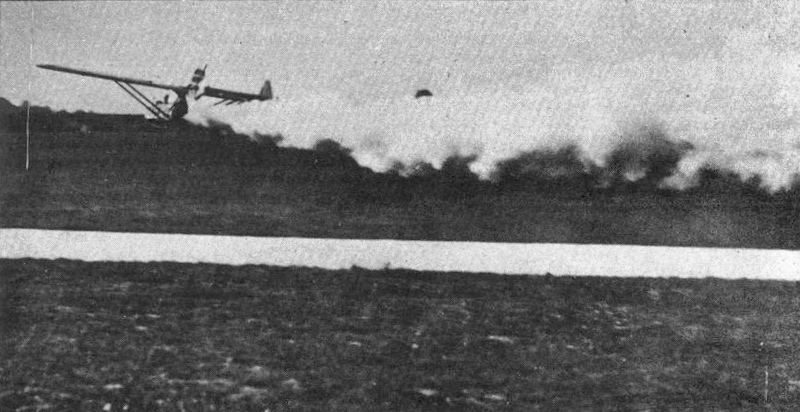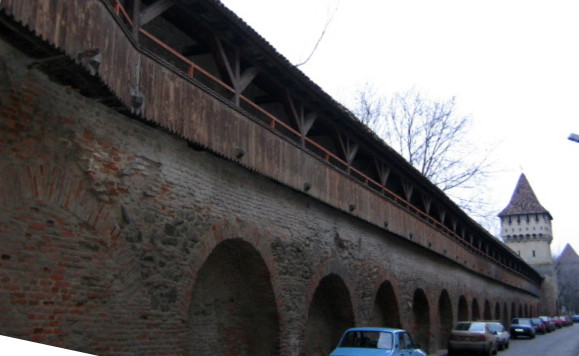|
Aurel Vlaicu
Aurel Vlaicu (; 19 November 1882 – 13 September 1913) was a Romanian engineer, inventor, airplane constructor, and early pilot.Gheorghiu, 1960 Early years and education Aurel Vlaicu was born in the village of Bințințiencenc in Transylvania, Austria-Hungary. In 1925, by then part of Romania, it was renamed ''Aurel Vlaicu'', and is now part of Geoagiu town. He attended a Calvinist high school in Szászváros (renamed Aurel Vlaicu High School in his honor in 1919) and took his baccalaureate in Nagyszeben (today Sibiu) in 1902. He was a high school colleague of Petru Groza, and in Nagyszeben became friends with Octavian Goga. Vlaicu furthered his studies at Technical University of Budapest and Technische Hochschule München in Germany, earning his engineer's diploma in 1907. Between 1907 and 1908 Vlaicu served in the Austro-Hungarian Navy, and on September 1, 1908, he took an engineer's position with the Opel car factory in Rüsselsheim. Aviation career Vlaicu left ... [...More Info...] [...Related Items...] OR: [Wikipedia] [Google] [Baidu] |
Kingdom Of Hungary
The Kingdom of Hungary was a monarchy in Central Europe that existed for nearly a millennium, from 1000 to 1946 and was a key part of the Habsburg monarchy from 1526-1918. The Principality of Hungary emerged as a Christian kingdom upon the Coronation of the Hungarian monarch, coronation of the first king Stephen I of Hungary, Stephen I at Esztergom around the year 1000;Kristó Gyula – Barta János – Gergely Jenő: Magyarország története előidőktől 2000-ig (History of Hungary from the prehistory to 2000), Pannonica Kiadó, Budapest, 2002, , pp. 37, 113, 678 ("Magyarország a 12. század második felére jelentős európai tényezővé, középhatalommá vált."/"By the 12th century Hungary became an important European factor, became a middle power.", "A Nyugat részévé vált Magyarország.../Hungary became part of the West"), pp. 616–644 his family (the Árpád dynasty) led the monarchy for 300 years. By the 12th century, the kingdom became a European power. Du ... [...More Info...] [...Related Items...] OR: [Wikipedia] [Google] [Baidu] |
Austria-Hungary
Austria-Hungary, also referred to as the Austro-Hungarian Empire, the Dual Monarchy or the Habsburg Monarchy, was a multi-national constitutional monarchy in Central Europe#Before World War I, Central Europe between 1867 and 1918. A military and diplomatic alliance, it consisted of two sovereign states with a single monarch who was titled both the Emperor of Austria and the King of Hungary. Austria-Hungary constituted the last phase in the constitutional evolution of the Habsburg monarchy: it was formed with the Austro-Hungarian Compromise of 1867 in the aftermath of the Austro-Prussian War, following wars of independence by Hungary in opposition to Habsburg rule. It was dissolved shortly after Dissolution of Austria-Hungary#Dissolution, Hungary terminated the union with Austria in 1918 at the end of World War 1. One of Europe's major powers, Austria-Hungary was geographically the second-largest country in Europe (after Russian Empire, Russia) and the third-most populous (afte ... [...More Info...] [...Related Items...] OR: [Wikipedia] [Google] [Baidu] |
Opel
Opel Automobile GmbH (), usually shortened to Opel, is a German automobile manufacturer which has been a subsidiary of Stellantis since 16 January 2021. It was owned by the American automaker General Motors from 1929 until 2017 and the PSA Group prior to its merger with Fiat Chrysler Automobiles to form Stellantis in 2021. Most of the Opel lineup is marketed under the Vauxhall Motors, Vauxhall brand in the United Kingdom since the 1980s. Some Opel vehicles were badge engineering, badge-engineered in Australia under the Holden brand until 2020, in North America and China under the Buick, Saturn Corporation, Saturn (until 2010), and Cadillac brands, and in South America under the Chevrolet brand. Opel traces its roots to a sewing machine manufacturer founded by Adam Opel in 1862 in Rüsselsheim am Main. The company began manufacturing bicycles in 1886 and produced its first automobile in 1899. With the Opel RAK program, the world's first rocket program, under the leadership of F ... [...More Info...] [...Related Items...] OR: [Wikipedia] [Google] [Baidu] |
Austro-Hungarian Navy
The Austro-Hungarian Navy or Imperial and Royal War Navy (, in short ''k.u.k. Kriegsmarine'', ) was the navy, naval force of Austria-Hungary. Ships of the Austro-Hungarian Navy were designated ''SMS'', for ''Seiner Majestät Schiff'' (His Majesty's Ship). The k.u.k. Kriegsmarine came into being after the formation of Austria-Hungary in 1867, and ceased to exist in 1918 upon the Empire's defeat and subsequent collapse at the end of World War I. Before 1867, the Imperial Austrian Navy or simply the Austrian Navy, saw action in the French Revolutionary Wars, the Napoleonic Wars, the Austrian expedition against Morocco (1829), the Second Egyptian–Ottoman War, the First Italian War of Independence, First and Second Italian War of Independence, Second Italian unification, Wars of Italian Independence, the Second Schleswig War, and the Third War of Italian Independence. Following Austria's defeat by Prussia and Italy during the Seven Weeks' War, the Austrian Empire Austro-Hungarian C ... [...More Info...] [...Related Items...] OR: [Wikipedia] [Google] [Baidu] |
German Empire
The German Empire (),; ; World Book, Inc. ''The World Book dictionary, Volume 1''. World Book, Inc., 2003. p. 572. States that Deutsches Reich translates as "German Realm" and was a former official name of Germany. also referred to as Imperial Germany, the Second Reich or simply Germany, was the period of the German Reich; . from the unification of Germany in 1871 until the German revolution of 1918–1919, November Revolution in 1918, when the German Reich changed its form of government from a monarchy to a Weimar Republic, republic. The German Empire consisted of States of the German Empire, 25 states, each with its own nobility: four constituent Monarchy, kingdoms, six Grand duchy, grand duchies, five Duchy, duchies (six before 1876), seven Principality, principalities, three Free imperial city, free Hanseatic League, Hanseatic City-state, cities, and Alsace–Lorraine, one imperial territory. While Prussia was one of four kingdoms in the realm, it contained about two-thirds ... [...More Info...] [...Related Items...] OR: [Wikipedia] [Google] [Baidu] |
Technical University Of Munich
The Technical University of Munich (TUM or TU Munich; ) is a public research university in Munich, Bavaria, Germany. It specializes in engineering, technology, medicine, and applied and natural sciences. Established in 1868 by King Ludwig II of Bavaria, the university now has additional campuses in Garching, Freising, Heilbronn, Straubing, and Singapore, with the Garching campus being its largest. The university is organized into seven schools, and is supported by numerous research centers. It is one of the largest universities in Germany, with 52,931 students and an annual budget of €1,892.9 million including the university hospital. A ''University of Excellence'' under the German Universities Excellence Initiative, TUM is among the leading universities in the European Union. Its researchers and alumni include 18 Nobel laureates and 24 Leibniz Prize winners. History 19th century In 1868, King Ludwig II of Bavaria founded the ''Polytechnische Schule München'' w ... [...More Info...] [...Related Items...] OR: [Wikipedia] [Google] [Baidu] |
Technical University Of Budapest
The Budapest University of Technology and Economics ( or in short ), official abbreviation BME, is a public research university located in Budapest, Hungary. It is the most significant university of technology in the country and is considered the world's oldest institute of technology which has university rank and structure. It was founded in 1782. More than 110 departments and institutes operate within the structure of eight faculties. About 1100 lecturers, 400 researchers and other degree holders and numerous invited lecturers and practising expert specialists participate in education and research at the Budapest University of Technology and Economics. Approximately 1381 of the university's 21,171 students are foreigners, coming from 50 countries. The Budapest University of Technology and Economics issues about 70% of Hungary's engineering degrees. 34 professors/researchers of the university are members of the Hungarian Academy of Sciences. Training courses are provided in fi ... [...More Info...] [...Related Items...] OR: [Wikipedia] [Google] [Baidu] |
Octavian Goga
Octavian Goga (; 1 April 1881 – 7 May 1938) was a Romanian far-right politician, poet, playwright, journalist, and translator. Biography Early life Octavian Goga was born on 1 April 1881 in the village of Rășinari, on the northern slopes of the Southern Carpathians, in the house at 778 Ulița Popilor, the son of the Orthodox priest Iosif Goga and Aurelia, a teacher (and a collaborator in his youth at the newspaper ''Telegraful Român'' and the magazine ''Familia''). Between 1886 and 1890 Goga attended primary school in his native village, having Moise Frățilă, a patriotic intellectual and the possible character in the poem ''Dascălul'', as his sister Victoria, who died early, was the character in Dăscălița'. Most of his holidays, as he recounts in various autobiographical texts, were spent in his father's native village, Crăciunelu de Sus, Alba County, on the Târnava Mică, now part of the commune of Cetatea de Baltă, where about 20% of the families in t ... [...More Info...] [...Related Items...] OR: [Wikipedia] [Google] [Baidu] |
Petru Groza
Petru Groza (7 December 1884 – 7 January 1958) was a Romanian politician, best known as the first Prime Minister of Romania, Prime Minister of the Romanian Communist Party, Communist Party-dominated government under Soviet Union, Soviet Soviet occupation of Romania, occupation during the early stages of the Socialist Republic of Romania, Communist regime in Romania, and later as the President of the Presidium of the Great National Assembly (Socialist Republic of Romania), Great National Assembly (nominal head of state of Romania) from 1952 until his death in 1958. Groza emerged as a public figure at the end of World War I as a notable member of the Romanian National Party (PNR), preeminent layman of the Romanian Orthodox Church, and then member of the Directory Council of Transylvania. In 1925–26 he served as Minister of State in the cabinet of Mareșal (Romania), Marshal Alexandru Averescu. In 1933, Groza founded a left-wing Agrarianism, Agrarian organization known as the P ... [...More Info...] [...Related Items...] OR: [Wikipedia] [Google] [Baidu] |
Sibiu
Sibiu ( , , , Hungarian: ''Nagyszeben'', , Transylvanian Saxon: ''Härmeschtat'' or ''Hermestatt'') is a city in central Romania, situated in the historical region of Transylvania. Located some north-west of Bucharest, the city straddles the Cibin River, a tributary of the Olt River. Now the seat of Sibiu County, between 1692 and 1791 and 1849–65 Sibiu was the capital of the Principality of Transylvania. Until 1876, the Hecht hause in Sibiu served as the seat of the Transylvanian Saxon University. Nicknamed ''The Town with Eyes'' for the eyebrow dormers on many old buildings, the town is a popular tourist destination. It is known for its culture, history, cuisine, and architecture. In 2004, its historical center was added to the tentative list of UNESCO World Heritage Sites. Sibiu was subsequently designated the European Capital of Culture in 2007, along with Luxembourg City. One year later, it was ranked "Europe's 8th-most idyllic place to live" by ''Forbes''. Sibi ... [...More Info...] [...Related Items...] OR: [Wikipedia] [Google] [Baidu] |
Bachelor's Degree
A bachelor's degree (from Medieval Latin ''baccalaureus'') or baccalaureate (from Modern Latin ''baccalaureatus'') is an undergraduate degree awarded by colleges and universities upon completion of a course of study lasting three to six years (depending on the institution and academic discipline). The two most common bachelor's degrees are the Bachelor of Arts (BA) and the Bachelor of Science (BS or BSc). In some institutions and educational systems, certain bachelor's degrees can only be taken as graduate or postgraduate educations after a first degree has been completed, although more commonly the successful completion of a bachelor's degree is a prerequisite for further courses such as a master's or a doctorate. In countries with qualifications frameworks, bachelor's degrees are normally one of the major levels in the framework (sometimes two levels where non-honours and honours bachelor's degrees are considered separately). However, some qualifications titled bachelor's ... [...More Info...] [...Related Items...] OR: [Wikipedia] [Google] [Baidu] |






